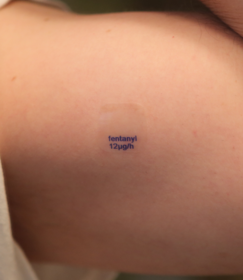|
The U.S. Department of Labor has awarded more than $1 million to the Indiana Department of Workforce Development. The funds will help train staff in 25 counties to help combat widespread opioid use, substance use disorder and overdoses. Participants will be given training in jobs that address the impact of the opioid crisis, such as recovery coaches, peer navigators and community health workers. The money may also be used to train individuals to work in mental health treatment, addiction treatment and pain management. The grant will serve people in the following counties: Bartholomew, Blackford, Clark, Crawford, Dearborn, Decatur, Delaware, Fayette, Franklin, Floyd, Harrison, Henry, Jackson, Jay, Jefferson, Jennings, Ohio, Randolph, Ripley, Rush, Scott, Switzerland, Union, Washington and Wayne.
 A study published in the journal JAMA Internal Medicine found that lonely seniors are more likely to take opioid painkillers, sedatives, anti-anxiety drugs and other medications, which puts them at increased risk of drug dependency, attention problems, falls, accidents and mental decline. Almost one quarter (23%) of highly lonely seniors used anti-anxiety meds and sedatives, including drugs such as Valium, Unisom and tricyclic antidepressants that have been linked with a higher risk for dementia. The rate of prescription opioid use among those highly lonely was 11%. Researchers also found that highly lonely seniors were more likely than those who weren't lonely to be taking five or more medications, 58% versus 46%. The study suggests “social prescribing” instead, which directs seniors to local social opportunities such as senior centers, exercise classes, grief groups or volunteer programs.
 According to the U.S. Food and Drug Administration, accidental exposure to fentanyl pain patches is putting children's lives at risk. Fentanyl pain patches are typically prescribed to patients who require round-the-clock, long-term pain relief, such as cancer patients. However, children can overdose on new or used fentanyl patches by putting them in their mouths or on their skin. This drug can slow breathing and decrease levels of oxygen in a child's blood, potentially causing death. The FDA is calling on parents and caregivers to make sure these patches are stored, used and disposed of properly. The agency offers these tips:
- Keep fentanyl patches and other drugs in a secure location out of children's sight and reach. Little ones may think a prescription patch is a sticker, tattoo or bandage.
- Cover the fentanyl patch with a transparent adhesive film or apply first aid tape around the edges to secure it to your skin.
- Throughout the day, check that the patch is still in place and secure.
- When you apply a new patch, immediately dispose of the used one properly.
The FDA also suggests if you or someone you know uses fentanyl patches or other prescription opioids, ask your healthcare provider about obtaining naloxone, a drug used to reverse an overdose. Naloxone can be given to anyone, including kids, who may have been exposed to a fentanyl patch.
Looking for drug overdose data? State and county level data relating to drug overdose deaths, nonfatal overdoses, opioid prescribing and much more can be found on the Drug Overdose Dashboard. Additional overdose data can be found on StatsExplorer. Please reach out to the DOP team to ask data questions.
|